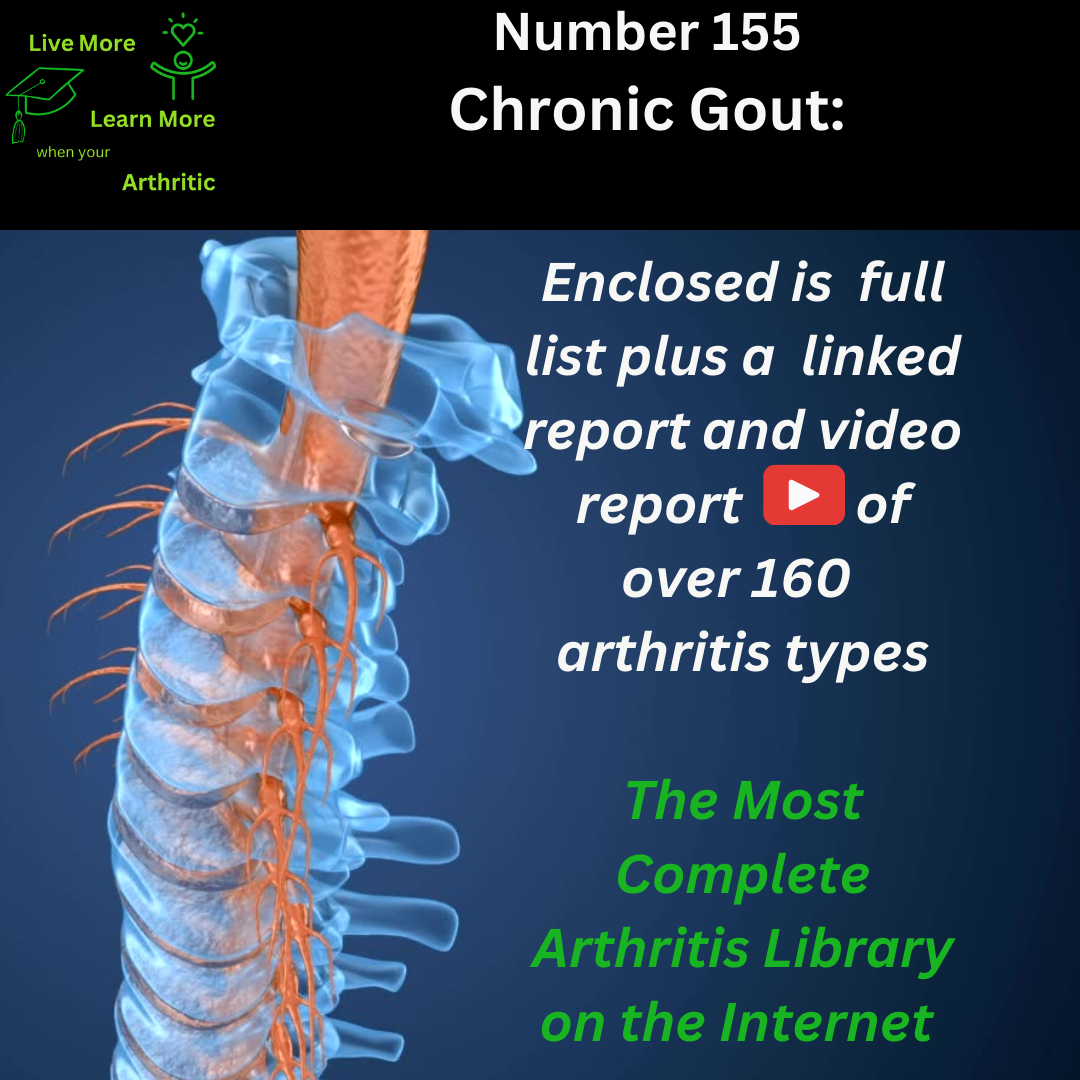
Chronic Gout: Number 155 Types of Arthritis
Understanding Chronic Gout and its Comorbidities
Chronic Gout, characterized by recurrent episodes of joint inflammation due to uric acid crystal deposition, can overlap with other forms of arthritis, particularly Osteoarthritis (OA) and Rheumatoid Arthritis (RA). While Gout is primarily driven by urate crystal formation, it can coexist with OA or RA, leading to complex symptomatology and treatment challenges.
Comorbidity Dynamics
The comorbidity between Chronic Gout and OA or RA often presents challenges in diagnosis and management. Gouty arthritis may mimic symptoms of OA or inflammatory arthritis, necessitating careful evaluation and tailored treatment strategies to address both conditions simultaneously.
Inflammatory Nature of Chronic Gout
Chronic Gout is considered an inflammatory arthritis due to the immune response triggered by uric acid crystals in joints. The release of inflammatory mediators contributes to joint swelling, redness, and pain characteristic of gouty flares.
Affected Body Parts and Joints
The joints most commonly affected by Chronic Gout include the big toe (first metatarsophalangeal joint), ankles, knees, wrists, and fingers. These joints often experience acute episodes of inflammation, leading to severe pain and limited mobility during flares.
Remission and Disease Description
Achieving remission in Chronic Gout involves lowering serum uric acid levels through lifestyle modifications (e.g., dietary changes, weight loss), medications (e.g., urate-lowering agents), and avoiding triggers such as alcohol and high-purine foods. Gout is caused by hyperuricemia, where uric acid levels exceed the kidney’s ability to excrete it, resulting in crystal deposition in joints.
Causes and Triggers
The primary cause of Chronic Gout is elevated uric acid levels in the blood (hyperuricemia), which can result from genetic factors, dietary choices (e.g., excessive intake of purine-rich foods like red meat and seafood), obesity, and certain medical conditions (e.g., kidney disease).
Symptoms and Complications
Symptoms of Chronic Gout include sudden and severe joint pain, swelling, redness, and warmth in affected joints during flares. Long-term complications may include joint damage (tophi formation), kidney stones, and chronic kidney disease due to urate crystal deposition.
Impact on Quality of Life and Longevity
Chronic Gout can significantly impact quality of life due to chronic pain, functional impairment during flares, and the risk of permanent joint damage. While Gout itself does not shorten lifespan directly, complications such as cardiovascular disease and kidney dysfunction can affect overall health outcomes.
Differences from Primary Arthritis
Chronic Gout differs from primary arthritis like OA or RA in its underlying pathophysiology, primarily driven by uric acid metabolism. Unlike OA, which involves cartilage degeneration, Gout primarily affects joint tissues through crystal-induced inflammation.
Gender and Age Trends
Chronic Gout is more common in men, particularly after middle age, due to hormonal and lifestyle factors. However, women can also develop Gout, especially after menopause. Genetic predisposition, dietary habits, and obesity are significant risk factors for Gout development.
Interconnected Health Risks
Individuals with Chronic Gout are at increased risk of developing metabolic syndrome, cardiovascular disease, and kidney complications due to shared underlying factors such as hyperuricemia and inflammation.
Proactive Management and Complication Prevention
A proactive approach to Chronic Gout involves lifestyle modifications (e.g., healthy diet, weight management), regular monitoring of uric acid levels, and adherence to prescribed medications to prevent flares and long-term complications.
In summary, Chronic Gout is a complex inflammatory arthritis characterized by recurrent joint inflammation due to uric acid crystal deposition. Understanding its comorbidities, impact on health, and proactive management strategies is crucial for optimizing quality of life and reducing the risk of associated complications.

